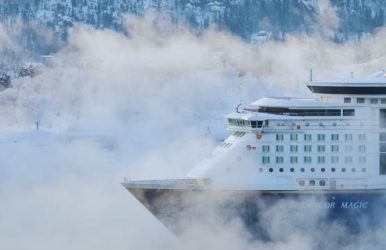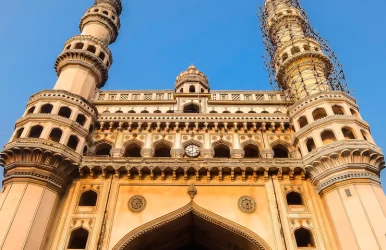Top 8 Travel Medical Insurance Trends to Consider
BY Ankita Apr 18, 2024
Are you feeling wanderlust when looking at TikTok or Instagram videos? Feeling like going somewhere for a vacation? Or maybe an adventure trip in the mountains? Then, you just plan a vacation and execute the plan. But before you go on your journey, you might want to consider taking travel medical insurance. Don't know what travel medical insurance is? It is a specific medical insurance for travelers designed for travel emergencies. This insurance covers your medical expenses while you are traveling. You know life happens to anywhere and to any one. So staying prepared is all you can do to avoid sudden expenses that you might incur while traveling. Traveling has become a part of life for many, and we travel for work as well. You can face lots of challenges as a traveler in foreign lands or domestically. But to overcome your medical emergencies, you can rely on travel medical insurance that meets the evolving needs of travelers. So, for you, we have noted the top eight travel medical insurance trends in 2024 for travelers. Comprehensive Coverage for Pandemics and Beyond Do you remember the pandemic? With fresh memories of the COVID-19 pandemic in your mind, you are bound to look for travel medical insurance. You saw and lived through the pandemic and saw how medical bills can empty your savings. This is why you need good travel medical insurance for emergencies you can foresee while traveling. When looking for medical insurance for travelers, you must seek a wide range of coverage for emergencies. Your insurance must cover all treatments, accidents, tests, quarantine costs, and emergencies like Covid-19. You might fall ill or need to be evacuated for medical emergencies while traveling. See to it that you get all the complete medical coverage while traveling. Telemedicine Services: Accessing Healthcare Anywhere You live in a technology advanced world where virtual or telemedicine services can easily be accessed when traveling. You can connect with a doctor or any healthcare profession to seek guidance during emergencies. And you can get this service from any place in the world with the internet. Need advice for a minor illness? Just pick up your phone and ask your doctor. Need a prescription to get medicine? you are just a call away for getting it virtually. In case of emergencies, you might get the greatest use of a telemedicine service as a healthcare professional can guide you in the right path towards seeking immediate treatment. Flexibility in Policies: Adapting to Changing Circumstances You need flexibility in your travel medical insurance when traveling. Your trip might get canceled due to an emergency. Or you might find better travel insurance? In this case, you will naturally want to cancel your travel medical insurance. So, your insurance should have a flexible cancellation policy along with a refund option. You do not want to incur a penalty just because you want to cancel your travel insurance. Our circumstances can change at any time, be it due to a medical emergency in your family or a work engagement. In this ever-shifting world, you need flexible medical insurance for your travel. Digital Claims Processing: Streamlining the Experience Are you worried about the paperwork needed to get your claims? Do you detest the extremely time-consuming process of getting your insurance money? Then go for a cashless travel medical insurance that is efficient in giving claims without over digital platforms. Ask the insurance agent if there is any medical insurance for travelers that offers online claims. In the age of advanced technology and digital age, insurance companies are bound to provide you with paperless claims for medical emergencies when travelling. With just a few clicks and information, you will get all the assistance you need during medical emergencies. This makes getting travel insurance easier when traveling, even if you forget it beforehand. You can still get travel medical insurance on your phone with a simple search. Customizable Plans: Tailoring Coverage to Individual Needs Just like no two people are alike, similarly, every insurance is different. You might have different needs for your insurance, while someone might have some other needs. So you should have a travel insurance that is customizable. You should have the option to customize your insurance based on your travel itinerary. You might be a nomad traveler or an adventure seeker who is always seeking thrills when traveling. So go for insurance that covers all kinds of emergency situations that you can foresee in your travel plan. From extended number of days when traveling to covering high-risk activities, seek for flexible insurance. Mental Health Coverage: Addressing the Importance of Well-being You know traveling can be exciting and freeing but constant traveling can play with your mental health. Different cultures and places where you have to adjust with the environment, weather and people can take a toll on your mind. Therefore, you need a travel medical insurance that can help you with your mental well-being. So, you should opt for a medical insurance that covers mental health treatments and consultancies. You might need a counseling session while traveling so a virtual counseling session should also be covered in your insurance. Remote Monitoring Technology: Empowering Travelers with Data Advancements in wearable technology and remote monitoring devices are empowering travelers to take control of their health while on the move. In 2024, some insurance providers are integrating remote monitoring technology into their offerings, allowing travelers to track their health vitals, receive alerts for potential health issues, and access assistance when needed. Whether it's monitoring heart rate, blood pressure, or sleep patterns, travelers appreciate the ability to stay informed about their health status in real time, enabling them to make informed decisions about their well-being during their travels. Local Healthcare Access: Ensuring Quality Care Worldwide A crucial point you should remember when choosing travel medical insurance is to see the quality of treatment the insurance would provide. Keep note of the healthcare services being offered in the insurance. Be it major medical emergencies or minor illnesses, see to it that your insurance covers all. Reliable medical assistance is crucial for you when in emergency situations, so do not take the quality of the insurance lightly. Do you know that several insurance companies are partnering with large medical facilities to provide services? You can opt for these travel insurance that have tie-ups with major healthcare services which are reputable. Reliable healthcare can help us avoid major disasters when we are in emergency situations. If you are moving abroad for longer time period, consider an international health insurance policy instead of a travel insurance plan because: Your travel insurance plan will only cover emergencies incurred while traveling Your travel insurance plans usually cover your travel for a year Don't think your already existing health conditions will be covered under these policies. You will need regular healthcare insurance to cover your emergency bills when you are not traveling. Conclusion Now you know why following the 2024 travel medical insurance trends can actually be benefitting for you. One of the major reasons why you should opt for travel medical insurance is for your peace of mind. While traveling, you want to enjoy the experience and not worry about anything else. This is only possible when you have taken care of your future emergencies. So, next time you travel, take a travel medical insurance to make your travel peaceful. It's also convenient to travel with a travel medical insurance. If you ever find yourself in need of urgent medical evacuation, Air Ambulance 1 is ready to provide safe, reliable, and timely transport wherever you are in the world. their global fleet network can access even the remotest parts of the world.












